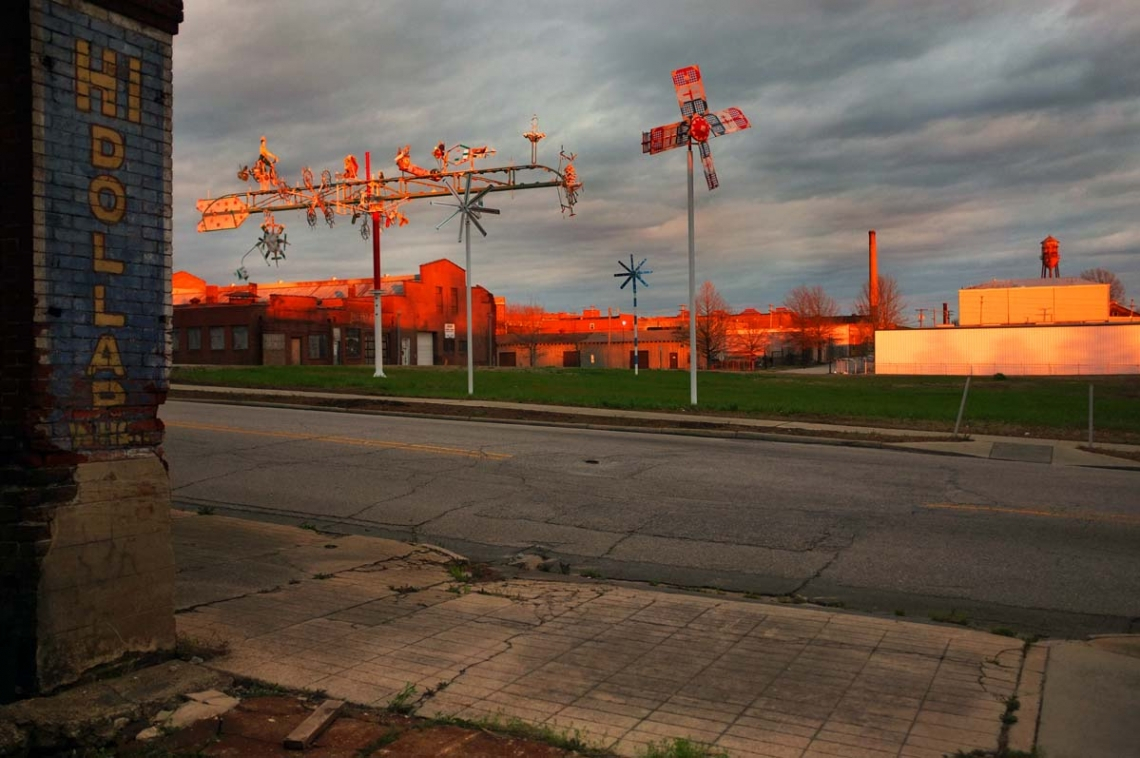
Case Study: Wilson, NC - Restoring Folk Art Is Creating Jobs and Revitalizing a Downtown
Once home to a thriving tobacco industry, Wilson is a small city of just under 50,000 people in rural North Carolina. The most recent census shows a diverse population of about 42 percent Caucasian, 47 percent African-American, and 10 percent Hispanic or Latino residents. Following the federal tobacco buy-out program, many of Wilson’s international tobacco buyers who were central to the region’s economy stopped coming to the city, leaving an economic vacuum. Today, 19.5 percent of Wilson residents live below poverty level, and the median household income is $38,384.
WWII veteran Vollis Simpson gift
Recently, Wilson was gifted ownership of a collection of large kinetic sculptures inspired by windmills. Created by the late WWII veteran Vollis Simpson, these “whirligigs” are internationally celebrated examples of vernacular art, and part of museum collections across the country, including the American Visionary Art Museum in Baltimore. The donated sculptures are in need of serious conservation as they are housed outdoors and have many moving parts which have deteriorated over the years. (As Simpson’s health declined, he was subsequently unable to manage their upkeep; Simpson passed away at the age of 94 in 2013.)
Working in public-private partnership, Wilson Downtown Properties (a nonprofit organization that encourages community development in Wilson’s downtown), the North Carolina Arts Council, and the City of Wilson set out to conserve the whirligigs and exhibit them in a new central public park. To anchor and activate underutilized civic space, the park would be located in the heart of Historic Downtown Wilson, close to the train station and Wilson’s administrative of offices, and accessible to residents and visitors alike. (Each year the annual Whirligig Festival draws about 50,000 people to town.) From the beginning, job training in conservation, engineering, and mechanics was identified as an area of importance to the project.
Community collaboration works
To develop its workforce-training program, the team collaborated with St. John’s Community Development Corporation, Opportunities Industrialization Center of Wilson, and the Wilson Community College, and targeted the local under/unemployed college-age youth population. With a mind toward preservation and mechanical craftsmanship, individuals took classes in welding, metal fabrication, sanding, grinding, painting, documentation, photography, and/or record-keeping. Conservation experts were hired by the project partners to guide the process and help establish high standards and protocols for mechanical and surface treatments; the intent was for these protocols to serve as a national model for conservation of vernacular art. Youth enrolled in the training were then hired and trained by the project to work on the whirligigs with the conservation experts. To date, the project has created 25 jobs as part of its workforce-training program, and has finished conserving 23 of the whirligigs.
$40 million-dollar increase in private investment
The completed restoration of these iconic structures marks the advent of the project phase focused on the development of the public park in downtown Wilson. Project partners initially projected a $40 million-dollar increase in private investment in the surrounding area over the ten years following the park’s opening. In actuality, before the park’s construction has even begun, more than $20 million in private investment has already occurred, including the transformation of long-time vacant properties in Historic Downtown Wilson into mixed-use developments. For example, Nash Street Lofts, a nearly century-old building on Wilson’s main thoroughfare, was vacant for more than 20 years but recently was redeveloped. Upon its opening in spring 2014, ten of the 13 units already were rented and occupied. This and other development plans and activities continue to bring new energy to downtown Wilson, adding further cultural resources to the city’s holdings and improving its economic future.
* This is shared with permission from the NEA book 'How to Do Creative Placemaking.' You can download the whole book free HERE.





